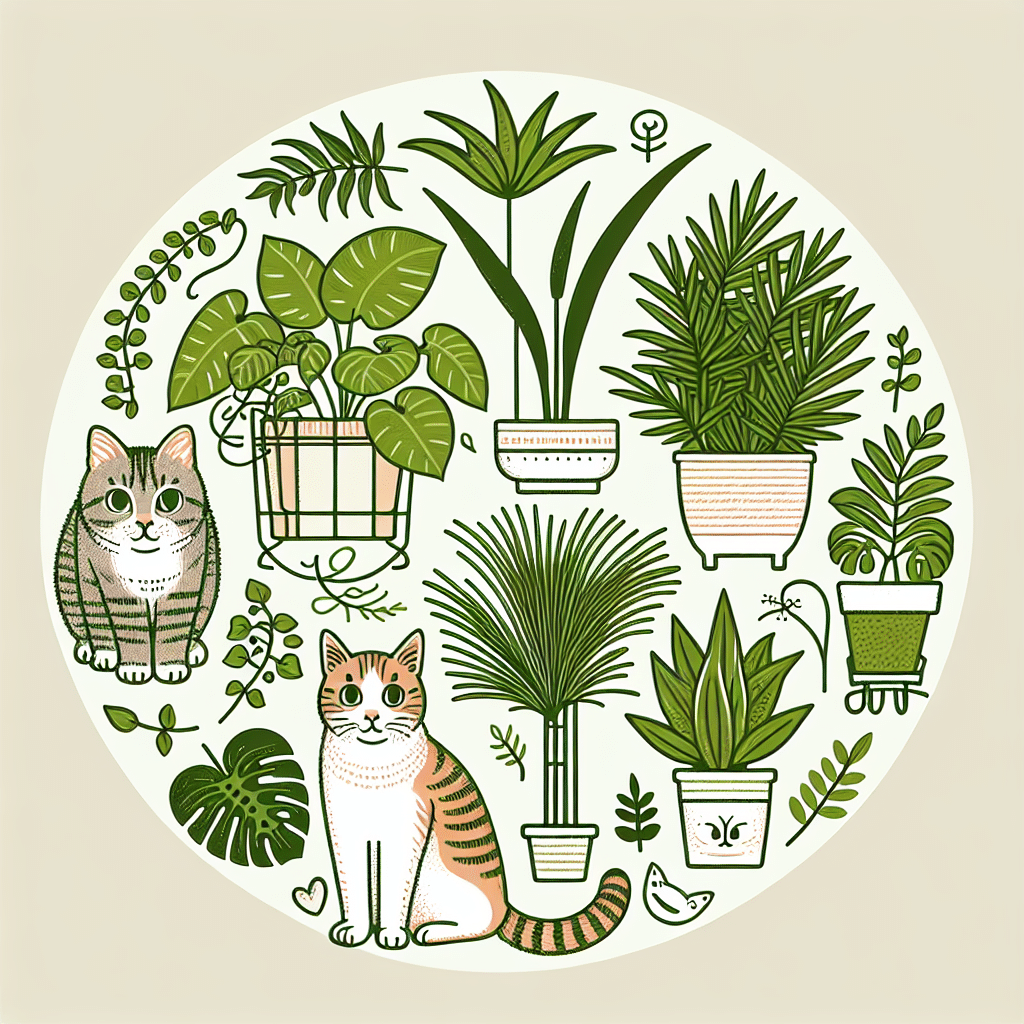Understanding Non-Toxic Air-Purifying Plants Safe for Cats
When it comes to creating a harmonious home environment, selecting the right plants can be an essential aspect, especially for cat owners. Cats are often curious creatures that explore their environment through touch and taste, which can lead them into trouble if they come into contact with toxic plants. Fortunately, several non-toxic plants can enhance air quality while being safe for your feline companions.
1. Spider Plant (Chlorophytum comosum)
The Spider Plant is not only easy to grow but also an excellent air purifier. It helps remove toxins like formaldehyde and xylene from the air. This resilient houseplant thrives in bright, indirect sunlight and requires minimal care. Spider Plants produce ‘pups’—small offshoots—which can be propagated easily. In addition, cats often enjoy chewing on the grass-like leaves, making it an appealing choice for pet owners.
Care Tips:
- Light: Bright, indirect sunlight.
- Water: Keep the soil moist but not soggy.
- Toxicity: Non-toxic to cats and dogs.
2. Boston Fern (Nephrolepis exaltata)
Boston Ferns are lush, feathery plants that not only purify the air but also add a beautiful aesthetic to your living space. They filter out formaldehyde and are renowned for their ability to maintain humidity, making them perfect for dry indoor environments. While they can be more demanding in terms of humidity and light, these ferns are incredibly rewarding with the right care.
Care Tips:
- Light: Indirect light is preferred; avoid direct sunlight.
- Water: Keep the soil consistently moist.
- Toxicity: Considered safe for cats and dogs.
3. Areca Palm (Dypsis lutescens)
The Areca Palm is a popular choice for indoor spaces due to its airy fronds and excellent air-purifying properties. This plant excels at filtering xylene and toluene from the air, helping to create a healthier environment. With moderate light requirements and a little attention to watering, the Areca Palm can grow quite tall, serving as a stunning focal point in your home.
Care Tips:
- Light: Prefers bright, indirect sunlight.
- Water: Allow the top inch of soil to dry out before watering.
- Toxicity: Completely safe for cats.
4. Parlor Palm (Chamaedorea elegans)
Equally elegant and non-toxic, the Parlor Palm is another excellent choice for homes with pets. It’s particularly adaptable and can thrive in low-light conditions, making it suitable for various indoor settings. The Parlor Palm is effective in removing indoor air pollutants and enhances the overall ambience of a room.
Care Tips:
- Light: Tolerates low light but flourishes in bright, indirect light.
- Water: Water when the top inch of soil feels dry.
- Toxicity: Safe for both cats and dogs.
5. Bamboo Palm (Chamaedorea seifrizii)
Bamboo Palms are known for their air-purifying ability and add a tropical flair to any indoor environment. They are particularly adept at filtering out benzene and formaldehyde. The Bamboo Palm prefers a bit of shade, making it well-suited for homes with limited natural light.
Care Tips:
- Light: Does well in indirect light; avoid direct sun.
- Water: Keep the soil lightly moist, ensuring good drainage.
- Toxicity: Non-toxic to cats.
6. Lady Palm (Rhapis excelsa)
The Lady Palm is a robust, elegant plant known for its ability to remove common indoor toxins. This palm can thrive in various lighting conditions, making it a versatile choice for your home. The lush foliage provides an attractive addition to any room while being entirely safe for cats.
Care Tips:
- Light: Thrives in low-to-medium light.
- Water: Water when the soil dries out; avoid waterlogging.
- Toxicity: Safe for cats and dogs.
7. Friendship Plant (Pilea involucrata)
Friendship Plants are compact houseplants with a unique texture and beautiful foliage. Not only do they purify air, but they also add a touch of nature to any space. They require moderate light and regular watering to keep their leaves vibrant.
Care Tips:
- Light: Prefers bright, indirect light.
- Water: Keep the potting mix consistently moist.
- Toxicity: Non-toxic to cats.
8. Cast Iron Plant (Aspidistra elatior)
The Cast Iron Plant is aptly named for its remarkable resilience. This hardy plant can survive under neglect and low light conditions, making it perfect for busy cat owners. While it may not be as decorative as some other plants, it purifies the air effectively and is entirely safe for pets.
Care Tips:
- Light: Tolerates low light; avoid direct sunlight.
- Water: Water sparingly; allows the soil to dry out between waterings.
- Toxicity: Safe for cats and dogs.
9. African Violet (Saintpaulia)
While primarily known for their colorful blooms and aesthetic appeal, African Violets also purify the air. These small houseplants require moderate care and provide vibrant flowers that can brighten up any room. Their non-toxic nature makes them a favorite among cat lovers.
Care Tips:
- Light: Prefers bright, indirect sunlight.
- Water: Water from the bottom to prevent leaf rot.
- Toxicity: Non-toxic to cats and dogs.
10. Phalaenopsis Orchid (Moth Orchid)
Phalaenopsis Orchids bring an exotic touch to your home while purifying the air. They are known for their long-lasting beautiful flowers and minimal care requirements. While care involves specific watering and light needs, they are completely non-toxic and safe for your feline friends.
Care Tips:
- Light: Needs bright, indirect sunlight.
- Water: Water thoroughly but allow to dry out between waterings.
- Toxicity: Safe for cats and dogs.
Choosing Non-Toxic Plants for Your Home
When selecting plants, remember to consider factors such as your cat’s behavior, your home’s light availability, and the level of care each plant requires. Always research any new plant before introducing it to your home, even if it’s deemed non-toxic, to ensure a safe and healthy environment for your furry friends.
